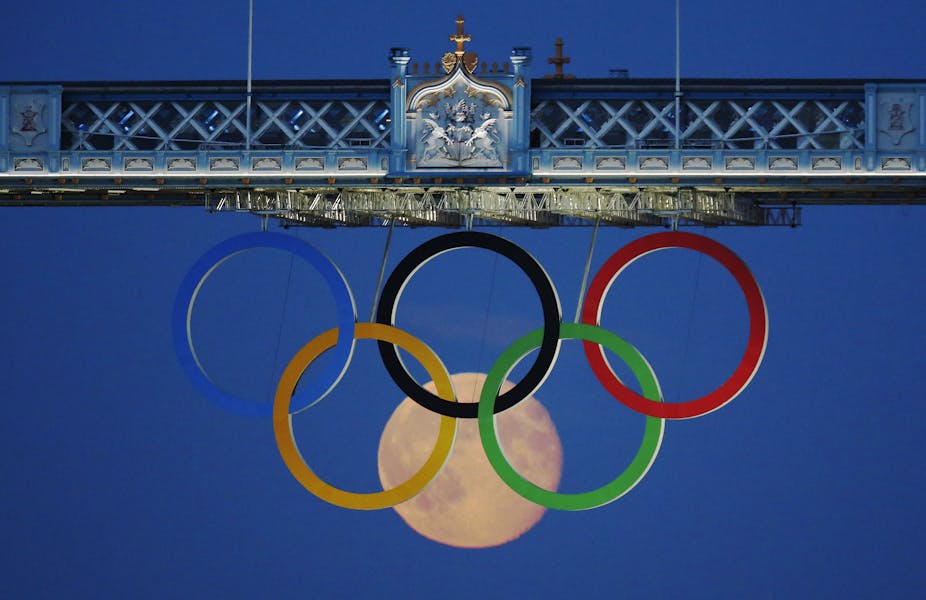With accusations of state-sanctioned doping levelled at Russia and some results from the 2012 London Olympic Games called into question, the integrity of elite global sport has rarely looked more fragile. The time has come to dump the piecemeal reforms and decide on a permanent venue for our flagship tournament; it would centralise control over events and even the training of the athletes.
My idea of a permanent Olympic site has been accused of being unrealistic or impractical. However, with every major sporting nation embroiled in one scandal or another over the past 20 years or so, it is clear the solution must be bold and come from the top.
With a central venue, the International Olympic Committee (IOC) can in one masterstroke confirm its rightful place as the epicentre of global sporting excellence and underscore the ideals of the Olympiad where peace and social justice can be promoted through a common global language of sport.
If you build it …
The costs of such a site and infrastructure would be immense, but then the costs right now aren’t chicken feed either. Tens of billions each were spent on the games in Beijing, London and Sochi. You have the bidding process, the campaigning, the planning, the massive infrastructure costs and the extra money proud hosts spend on training athletes to get a morale-boosting result. A single site for summer in Greece, historic home of the Olympics, and winter in neutral Switzerland, would each cost less to construct than recent Games in London and Sochi. Maintenance and running costs would be spread globally rather than resting with one nation..

Permanent sites can also provide a sense of gravitas – see the UN in New York for evidence of that – which heightens the moral and political authority of the organisation. This may never have been a more enticing prospect than it is right now. Sports organisations understand the need for “integrity”; the public must believe that true, fair and honest competition is taking place.
Development strategies
The waters have been muddied, however. Behind the facade we see lies a vast and wealthy sports industry worth about US$145 billion a year. And ever since the 1984 Olympics in Los Angeles turned a useful profit, we have become used to hearing that mega-events can be economic (re)generators for the hosts. Many countries link economic development strategies to the attraction of major international sporting events. They hope that they can buy exposure, boost tourism, and deliver supporting infrastructure.

And if a city is to mount a viable bid to host the Olympics, it needs an enthusiastic government behind it. But the necessarily unequivocal nature of political backing often ignores negative consequences. These can be found at local level near major projects, across the region, or can affect the whole country.
Host nations and cities want a sanitised space where imagined visions can be projected to spectators and the global community. Unsightly landscapes are removed and people are moved out of their homes, historic communities are broken down and cost overruns feed into national budgets and can damage citizens’ quality of life. In other words, the regeneration narrative is no simple tale to pull off; it is fraught with contradictions, questionable in its motivations and unverifiable in its results.
Aspiration nation
But we are happy to cheer the parade. We put to one side evidence about horrible living and working conditions for workers who produce sporting goods, and we don’t allow forced removals or the suppression of democratic freedoms to ruin our fun. We enjoy our festivals of nationalist celebration, stories of triumph against adversity.
A permanent Olympic site could let us do that without the tainted legacy of tawdry campaigns and brutal infrastructure projects. We could eliminate the economic injustices often promulgated in the name of the Olympics.
As the World Anti Doping Authority published its startling report on Russian athletics, however, the debate is less about the mechanics of bidding for the Olympics, than the chemistry of winning gold.
The athletes have always faced the brunt of criticism about doping, but in reality it is born from a structural issue. Simply put, we have a problem because the interests of administrators, coaches, suppliers, scientists and gambling rings all combine to make doping a sane decision; a risk worth taking for the athlete and their teams.
That’s why a permanent Olympic site under the control of IOC-managed training regimes and focused on performance excellence through clean practices would address the core of this structural problem. It would insert another, overriding, interest into that story of the athlete’s career which can challenge the narrative of success at all costs.

A single site would allow for tighter controls over performance enhancement, and more efficient and environmentally friendly delivery of Olympic Games competitions. There would be no reliance on diverse national approaches to each. It would also allow the IOC to more easily limit protests and maintain a safe environment for participation, rather than attempting to insert a massive logistical intrusion into one of the world’s major cities. All good news for any skittish corporate sponsors, who would also have their marketing investment more readily protected (no more troublesome “exclusion zones” perhaps).
Control over the entire process of elite sport at the highest level could be maintained directly. Is this likely in the near future? Perhaps not given the role of nationalism and national governments. But it is worth developing a model for such a site and how it would work practically for there will come a time when the classical liberal approach of small-scale reforms simply doesn’t cut it any more.

